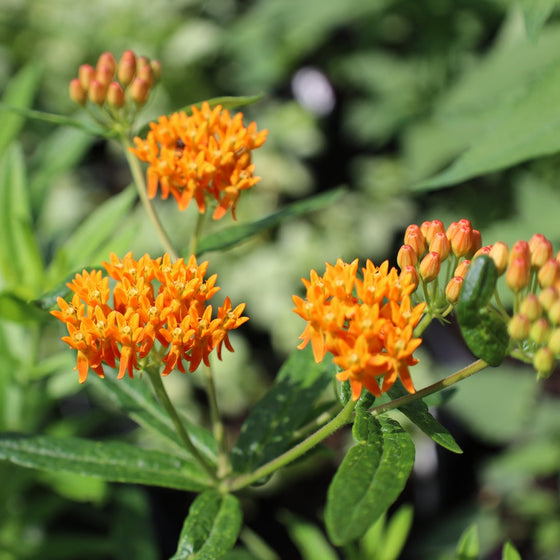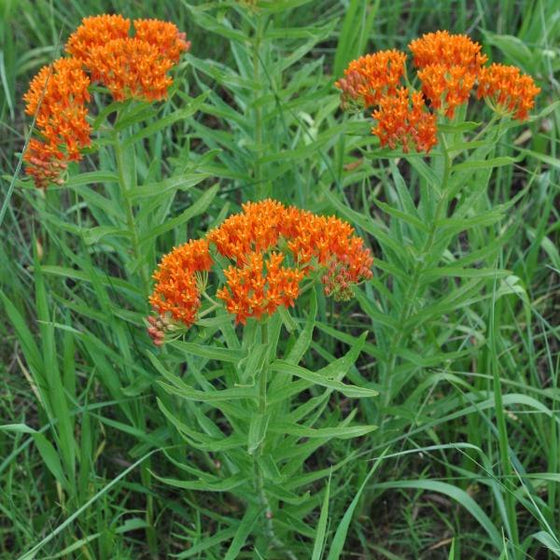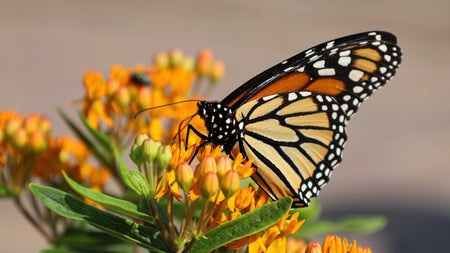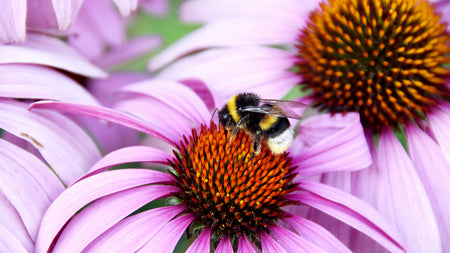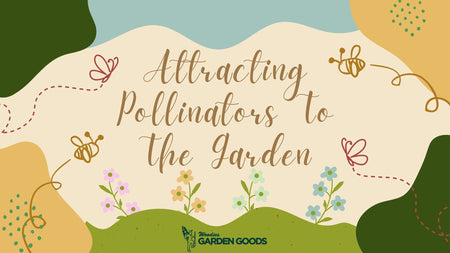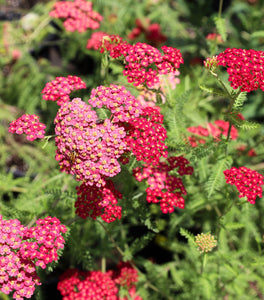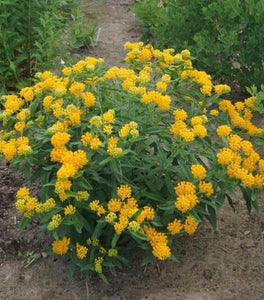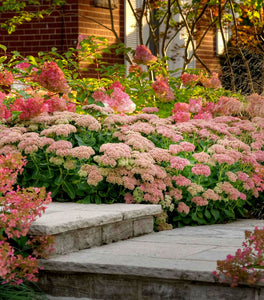
Images Depict Mature Plants
Orange Butterfly Weed Plants for Sale Online
Planting Butterfly Weed flowers will increase your chances of attracting beautiful butterflies to your garden, especially Monarchs. Easy to care for, these low-maintenance flowers are drought tolerant and need plenty of sunlight to thrive and look their best. Bring home the butterflies! Asclepias tuberosa is heavily laden with nectar and pollen, making it particularly attractive to butterflies, hummingbirds, and beneficial insects.
Asclepias tuberosa or Orange Butterfly Weed is an essential food source for Monarch butterfly caterpillars and very attractive to many varieties of butterflies. Orange Butterfly Weed is unique in its ability to grow in heavier clay soils.
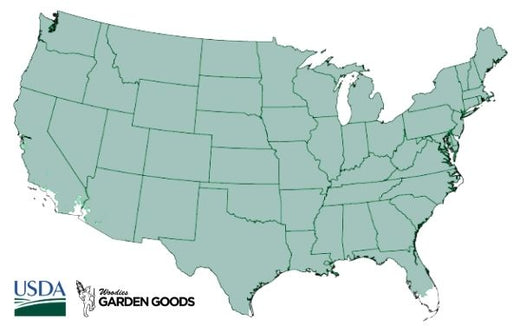
| Hardiness Zone: | 3-9 |
|---|---|
| Mature Height: | 18 to 24 inches |
| Mature Width: | 2 feet |
| Classification: | Perennial |
| Sunlight: | Full sun |
| Habit: | Upright, clump forming |
| Flower Color: | Bright orange |
| Flowering Season: | Mid to late summer |
| Foliage: | Green |
| Soil Condition: | Prefers dry, average to sandy soil, wont tolerate wet soil in winter |
| Water Requirements: | Water well until established |
| Uses: | Extremely attractive when used as a focal point in the mixed border, mass planting; attracts pollinators and hummingbirds |
How to Care for Orange Butterfly Weed
Before you buy a Butterfly Weed Plant, make sure to read about the recommended care instructions to keep this plant healthy and thriving.
How do I plant a Butterfly Weed Plant?
We suggest when planting your newly purchased Butterfly weed plants that you dig a hole twice as wide as the root system but not deeper. A good rule is that you should still be able to see the soil the plant was grown in after back-filling the hole. Butterfly weed does prefer drier soils in the winter so if there was ever a plant that we would recommend not adding topsoil or compost this is one. Depending on the quality of your existing soil you may need to add a locally sourced compost or topsoil to the back-fill soil. We do not recommend using straight topsoil or compost as a back-fill soil because more times than not these products will retain entirely to much moisture and will cause the root system to rot.
How do I water Butterfly Weed?
After planting your Butterfly weed, give it a slow, deep watering. Most of the water you put on the plant at first will run away from the plant until the soil is soaked. A general rule of thumb is to count to 5 for every one gallon of pot size. For example a one gallon pot would be watered until you count to 5 a three gallon pot would be 15 and so on. Check the plant daily for the first week or so and then every other day there after. Water using the counting method for the first few weeks.
How do I fertilize Butterfly Weed?
Feeding your plants is probably the single most forgotten part of growing healthy long lasting plants. We recommend feeding your Butterfly weed in the very early spring and again in mid summer after all new growth has hardened off and it begins to set flower buds. Bio-tone starter fertilizer is the best product to use at the time of planting. Our ideal fertilizer schedule for you to use is as follows. Apply an early spring fertilizer with a product such as Espoma Flower-tone at the recommended rate this will give the plant a boost of nitrogen potash that will be needed for healthy foliage and stem growth. Follow this up with another early summer application of Espoma Flower-Tone, this will again provide the necessary nutrients to promote a flush of beautiful flowers.
How do I mulch Butterfly Weed?
We highly recommend that you mulch your Butterfly weed with either a ground hardwood mulch or a ground cypress mulch depending on your local availability. Any type of mulch will do but cypress or hardwood mulch will be of a higher quality and provide better nutrition overall as they breakdown. Mulching helps to keep weeds away which will compete with your new investment for water and nutrients. A 2 to 3 inch layer of mulch is sufficient but remember to take care not to cover any part of the stem of the plant with mulch. Its better to leave a one inch gap of space between the mulch and the stem or base of the plant.
Additional Information
Butterfly weed is a 2 feet tall herbaceous perennial that dies back in winter and re-sprouts from its underground tuber each spring. The brilliant orange or red flower clusters appear in midsummer. These are followed by attractive green pods that open to release silky "parachutes" to drift away on autumn winds. Butterfly weed is unique among milkweeds in that the sap is not milky and the leaves are not opposite. Many flowers have an inner whorl of petals, called the corolla, and an outer whorl of sepals, called the calyx. These are the showy, colorful parts of a typical flower. The milkweeds are special: they have a third whorl above the corolla called the corona.
Butterfly weed is a trouble-free perennial that will come up year after year in the same place without crowding its neighbors. Plant butterfly weed in mixed borders, meadows and natural areas. Butterfly weed is slow to emerge in spring, so you may want to mark where they are. Butterfly weed is a colorful, long-lived, drought tolerant perennial. Large clusters of bright orange to yellow-orange flowers top clumps of erect, hairy 1-2 feet tall stems with lance-shaped leaves. The seed pods, with their long silky hairs, can be used in dried flower arrangements. Butterfly weed prefers well-drained neutral to alkaline soils and full sun. It is one of many Asclepias species, all of which are required food for monarch butterfly larvae. It is also a great nectar plant for other butterflies and insects. Butterfly weed works well in a meadow or a perennial garden


